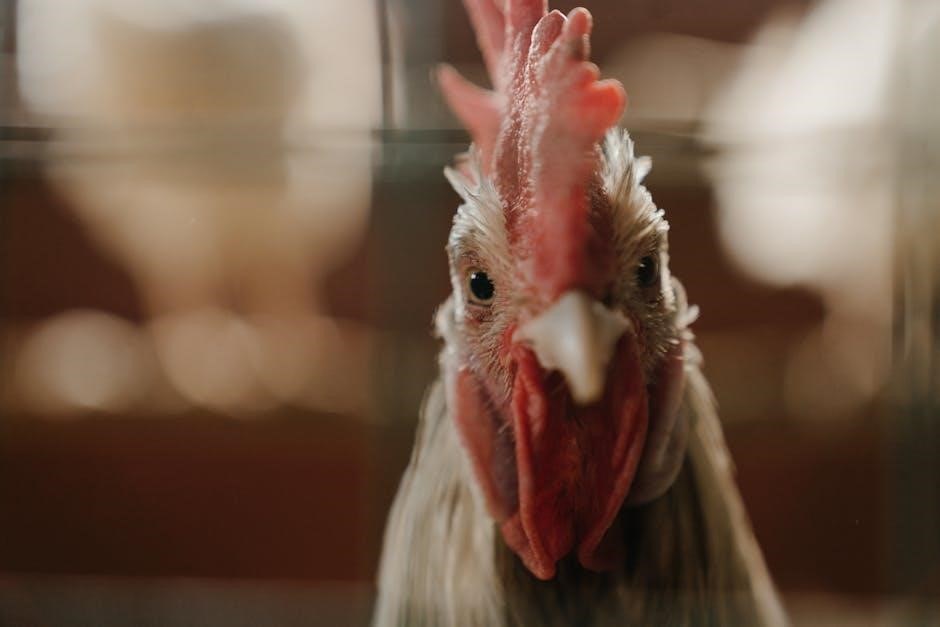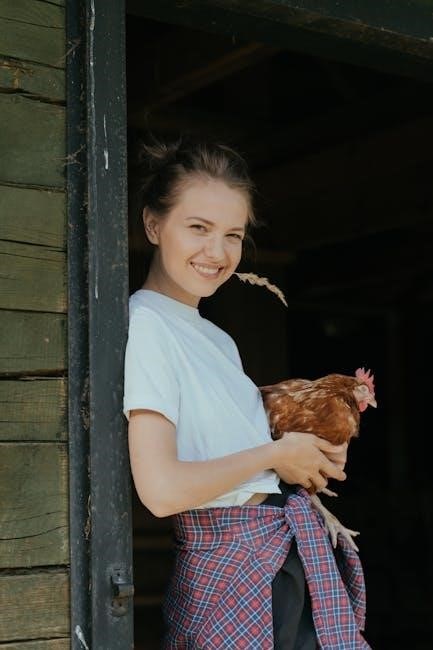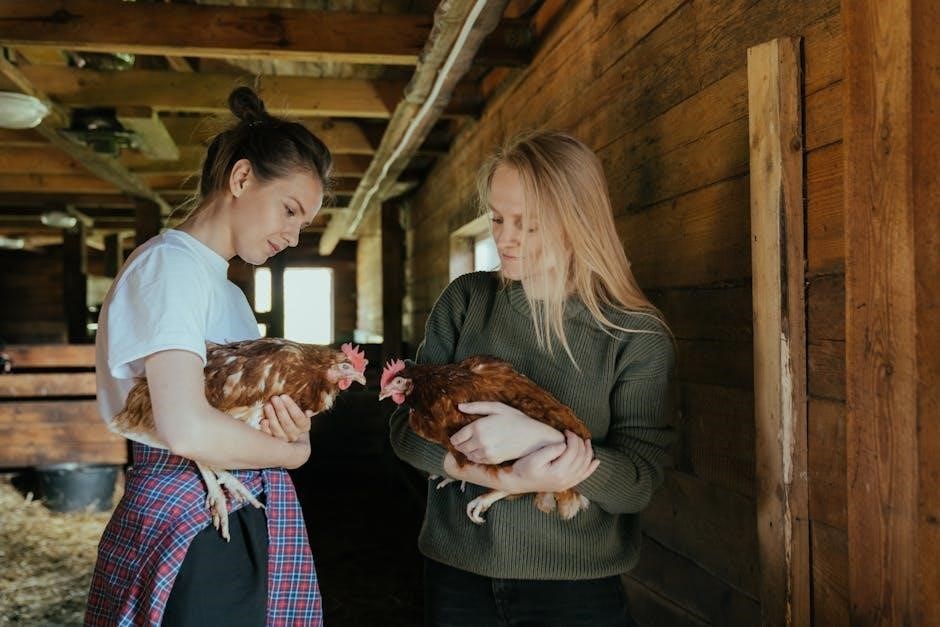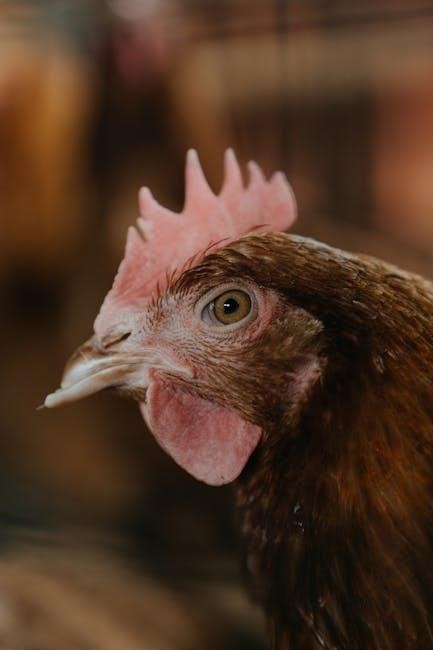
arkomeda cock tutorial
Welcome to the Arkomeda Cock Tutorial, your comprehensive guide to mastering the techniques and care for this unique breed. Discover its significance and importance in detail here.
What is an Arkomeda Cock?
The Arkomeda Cock is a unique and specialized breed known for its distinctive characteristics and traits. Originating from specific lineage, it has gained popularity for its adaptability and intelligence. This breed is often sought after for its versatility in various applications, making it a focal point of interest for enthusiasts. The Arkomeda Cock is characterized by its robust build and striking appearance, which set it apart from other breeds. Its unique features and capabilities make it a subject of detailed study and training, as outlined in this tutorial. Understanding its nature is essential for effective care and utilization, forming the foundation of this guide.

Why is the Arkomeda Cock Tutorial Important?
The Arkomeda Cock Tutorial is essential for anyone seeking to understand and care for this unique breed. It provides a detailed guide to mastering the techniques required for training, health, and maintenance. Whether you’re a novice or an experienced enthusiast, this tutorial offers valuable insights into optimizing the potential of the Arkomeda Cock. By following the structured approach, you’ll gain the knowledge needed to address its specific needs effectively. This comprehensive resource ensures that you’re well-equipped to provide the best possible care, making it an indispensable tool for anyone involved with this remarkable breed. Its importance lies in its ability to empower owners with actionable knowledge.

History and Background of the Arkomeda Cock
The Arkomeda Cock traces its origins to ancient breeding practices, evolving into a distinctive breed known for its unique characteristics and cultural significance in historical poultry-keeping traditions.
Origins of the Arkomeda Cock
The Arkomeda Cock originated in a specific region, developed through selective breeding to enhance its unique traits. Known for its vibrant plumage and distinctive crowing, it has been a subject of interest for poultry enthusiasts. Historical records suggest its ancestors were bred for both beauty and resilience, making it a popular choice for local farmers. Over time, the breed adapted to various environments, showcasing its hardiness. Its origins are deeply rooted in cultural practices, where it was often featured in traditional ceremonies and competitions. Today, the Arkomeda Cock remains a cherished breed, blending historical significance with modern appeal for breeders worldwide.
Evolution of the Arkomeda Cock Tutorial
The Arkomeda Cock Tutorial has evolved significantly over time, adapting to modern breeding and training methods. Initially developed as a basic guide, it expanded to include advanced techniques and care strategies. The tutorial incorporated insights from experienced breeders, ensuring comprehensive coverage of the breed’s needs. With advancements in technology, digital platforms now offer interactive learning tools, making the tutorial more accessible. Continuous updates reflect the latest research and best practices, ensuring users receive cutting-edge information. This evolution underscores the tutorial’s commitment to providing high-quality, relevant content for both novice and experienced enthusiasts of the Arkomeda Cock.

Step-by-Step Guide to the Arkomeda Cock Tutorial
Start with preparation, understand the basics, and progress to advanced techniques. Follow practical exercises and expert tips to master the Arkomeda Cock Tutorial effectively.
Preparing for the Tutorial
Before starting the Arkomeda Cock Tutorial, gather all necessary materials and tools. Create a structured schedule to ensure consistent progress. Set up a comfortable and distraction-free environment for effective learning. Familiarize yourself with the basics of the Arkomeda Cock to build a strong foundation. Mental preparation is key; stay focused and patient throughout the process. Organize your resources and ensure access to additional guides or support if needed. Proper preparation will enhance your learning experience and help you achieve your goals seamlessly.
Understanding the Basics of the Arkomeda Cock
Understanding the basics of the Arkomeda Cock is essential for a successful tutorial experience. This breed is known for its unique characteristics, requiring specific care and attention. Start by learning about its natural behavior, habitat, and dietary needs. Familiarize yourself with its communication patterns and social interactions. Recognize its physical attributes and how they influence its behavior. Knowledge of its exercise requirements and grooming needs is also crucial. By mastering these fundamental aspects, you’ll establish a strong foundation for advanced training and care. This understanding will help you address its specific needs effectively and ensure a harmonious relationship.
Advanced Techniques in the Arkomeda Cock Tutorial
Advanced techniques in the Arkomeda Cock Tutorial focus on refining skills and addressing complex challenges. These methods include specialized training exercises, problem-solving strategies, and advanced communication techniques. Learn how to implement nuanced commands and gestures for precise control. Discover how to adapt training to individual personalities and traits. Explore innovative approaches to agility and behavioral refinement. These techniques are designed to enhance performance, strengthen bonds, and ensure optimal results. By mastering these advanced strategies, you can overcome challenges and achieve exceptional outcomes in your Arkomeda Cock training journey. This section is your gateway to expert-level proficiency and mastery.

Training and Handling the Arkomeda Cock
Mastering the Arkomeda Cock requires a deep understanding of its behavior and effective handling techniques. This section provides insights into building trust and communication for successful training.
Voice Commands for the Arkomeda Cock
Effective voice commands are crucial for training the Arkomeda Cock. Start with clear, consistent commands like “sit,” “stay,” and “come.” Use a firm yet gentle tone to establish authority. Reward positive responses with treats or praise to reinforce good behavior. Avoid complex sentences; stick to short, memorable phrases. Over time, the Arkomeda Cock will associate specific sounds with desired actions, enabling seamless communication. Consistency is key to developing a reliable command system. Practice regularly to ensure the bird responds promptly and accurately, laying a strong foundation for advanced training techniques.
Agility Training for the Arkomeda Cock
Agility training is an excellent way to challenge and engage your Arkomeda Cock. Set up obstacle courses using tunnels, cones, and small jumps. Start with simple tasks like navigating through a hoop or climbing a low platform. Gradually increase difficulty by adding more complex challenges, such as weaving through poles or balancing on narrow surfaces. Reward the bird with treats or praise for successful attempts. Consistency and patience are key to building confidence and skill. This training not only improves physical fitness but also strengthens the bond between you and your Arkomeda Cock, making it a fun and rewarding experience for both.
Behavioral Training for the Arkomeda Cock
Behavioral training is crucial for fostering a well-adjusted and obedient Arkomeda Cock. Start by establishing a routine, as consistency helps the bird understand expectations. Teach basic commands like “sit” or “stay” using positive reinforcement, such as offering treats or praise. Addressing aggression or fear-based behaviors early is essential; desensitize the bird to triggers gradually. Socialization is key—introduce the Arkomeda Cock to various environments and people to build confidence. Be patient, as progress may be slow. Reward good behavior immediately to reinforce desired actions. Over time, this training will help create a calm, responsive, and well-behaved companion.

Diet and Nutrition for the Arkomeda Cock
A balanced diet is the foundation of your Arkomeda Cock’s health. Focus on high-quality foods rich in proteins, vitamins, and minerals. Tailor the diet to its life stage and activity level for optimal well-being. Consult a veterinarian to ensure nutritional needs are met and avoid deficiencies. Fresh fruits, vegetables, and grains should complement its staple diet. Avoid overfeeding to prevent obesity. Clean water must always be available. A well-planned diet supports energy, growth, and longevity. Regularly monitor and adjust as needed to maintain peak health.
Best Foods for the Arkomeda Cock
The Arkomeda Cock thrives on a diverse and nutrient-rich diet. High-quality commercial cock feed should form the staple, supplemented with fresh vegetables like leafy greens, carrots, and sweet potatoes. Fruits such as berries and apples can be given in moderation for added vitamins. Whole grains like oats and barley are excellent for digestion. Live insects, such as crickets and mealworms, provide essential proteins. Calcium supplements are crucial for strong bones, especially in younger cocks. Avoid giving avocado, onions, or processed foods, as they can be harmful. A varied diet ensures optimal health, energy, and longevity. Always consult a veterinarian for personalized recommendations.
Feeding Schedule for the Arkomeda Cock
A well-structured feeding schedule is essential for the Arkomeda Cock’s health. Begin with a morning feeding of high-quality commercial feed, followed by fresh vegetables midday. Provide live insects in the afternoon to boost protein intake. In the evening, offer a mix of whole grains and fruits. Ensure access to fresh water at all times. Younger cocks may require more frequent, smaller meals, while adults can thrive on two to three feedings daily. Adjust portions based on activity levels and season. Avoid overfeeding to prevent obesity. Maintain consistency to promote digestion and overall well-being. Consult a veterinarian for personalized feeding plans.
Nutritional Supplements for the Arkomeda Cock
Nutritional supplements play a vital role in ensuring the Arkomeda Cock’s optimal health. Calcium supplements are essential for strong bone development and eggshell production. Vitamin D3 enhances calcium absorption and supports overall immunity. Additionally, protein-rich supplements like mealworms or crickets can be added to their diet to promote muscle growth. Multivitamin powders tailored for birds can fill any nutritional gaps, ensuring a balanced intake of essential vitamins and minerals. Probiotics are also beneficial for maintaining a healthy digestive system. Always consult a veterinarian before introducing new supplements to avoid over-supplementation, which can lead to health complications. A balanced approach ensures long-term well-being.

Health and Wellness of the Arkomeda Cock
Regular check-ups, a balanced diet, and proper hygiene are crucial for maintaining the Arkomeda Cock’s health. Preventative measures like parasite control and mental stimulation ensure optimal well-being and longevity.
Common Health Issues in the Arkomeda Cock
The Arkomeda Cock can face specific health challenges, including respiratory infections, feather mites, and dietary deficiencies. Regular veterinary check-ups are essential to detect and treat these issues early. Proper hygiene and a balanced diet play a significant role in preventing many ailments. Additionally, stress-related conditions can arise if the cock’s environment is not maintained optimally. Owners should monitor their Arkomeda Cock for signs of illness, such as lethargy, labored breathing, or changes in appetite, and seek professional care promptly to ensure the bird’s well-being and longevity.
Preventative Care for the Arkomeda Cock
Preventative care is crucial for maintaining the Arkomeda Cock’s health. Regular veterinary check-ups ensure early detection of potential issues. Keeping the living environment clean and well-ventilated helps prevent diseases. A balanced diet rich in essential nutrients is vital, and avoiding overcrowding reduces stress. parasite control measures, such as regular inspections for mites and lice, are also important. Providing fresh water daily and ensuring proper hydration prevents dehydration-related problems. Regular exercise and mental stimulation can prevent behavioral issues. By following these practices, owners can significantly improve the overall well-being and longevity of their Arkomeda Cock.
Veterinary Care for the Arkomeda Cock
Veterinary care is essential for ensuring the health and well-being of the Arkomeda Cock. Regular check-ups with a qualified avian veterinarian help identify potential health issues early. Vaccinations and diagnostic tests, such as blood work or imaging, are crucial for maintaining health. Monitoring for common ailments like respiratory infections or feather infections is vital. A vet can also provide guidance on parasite control and dietary adjustments. Additionally, any signs of illness or injury should be addressed promptly to prevent complications. Keeping detailed health records and scheduling annual exams ensures consistent care. A good vet is your partner in giving your Arkomeda Cock a long, healthy life.

Tools and Equipment for the Arkomeda Cock Tutorial
Essential tools include perches, feeders, and cleaning brushes. Equipment like training clickers and harnesses aid in behavior management. Proper gear ensures a safe and effective learning environment.
Essential Tools for Training the Arkomeda Cock
Training the Arkomeda Cock requires specific tools to ensure effectiveness. A sturdy perch is vital for balance exercises, while a clicker helps in positive reinforcement training. A well-fitted harness aids in agility drills without causing discomfort. Treat dispensers are excellent for rewarding good behavior and keeping the cock engaged. Grooming tools, like soft brushes, maintain feather health and strengthen the bond between you and your bird. Lastly, a training mat provides a dedicated space for sessions, helping the Arkomeda Cock focus. These tools collectively create a structured and efficient training environment tailored to its unique needs and abilities.
Equipment for Housing the Arkomeda Cock
Proper housing equipment is crucial for the Arkomeda Cock’s comfort and well-being. A spacious aviary or cage with sturdy bars is essential to accommodate its size and active nature. Soft bedding, such as wood shavings or hemp, should line the floor to cushion its feet. A water bath container and feeding trays are necessary for hydration and nutrition. Perches of varying sizes and textures help maintain foot health, while nesting boxes provide a safe space for rest. Additionally, toys like swings and ladders keep the bird mentally stimulated. Ensure all equipment is durable and easy to clean to maintain a healthy environment.
Accessories for the Arkomeda Cock
Accessorizing your Arkomeda Cock’s environment enhances its quality of life. Toys like swings, ladders, and chewable items keep it entertained and mentally stimulated. Grooming tools, such as beak trimmers and nail clippers, are essential for maintenance. A bird-safe mirror or bell can provide enrichment. Identification tags or bands ensure your cock can be easily identified if it escapes. Additionally, a high-quality nesting box with soft bedding supports breeding and comfort. These accessories not only improve your bird’s well-being but also strengthen the bond between you and your Arkomeda Cock, making care more enjoyable and rewarding for both owner and bird.

Troubleshooting Common Issues
Troubleshooting common issues with the Arkomeda Cock involves identifying and addressing behavioral, training, or health-related problems. Effective strategies include adjusting routines, environment, or seeking expert advice for optimal resolution.
Addressing Behavioral Problems
Behavioral issues in the Arkomeda Cock, such as aggression or excessive noise, often stem from stress or lack of stimulation. Identify triggers like environment or diet, and adjust accordingly. Provide enrichment activities and consistent training to redirect negative behaviors. Positive reinforcement techniques, such as rewarding calm behavior, can be effective. If problems persist, consult a professional trainer or behaviorist for tailored solutions. Regular interaction and a stable routine also play crucial roles in resolving and preventing behavioral challenges, ensuring a harmonious relationship with your Arkomeda Cock.
Solving Training Challenges
Training challenges with the Arkomeda Cock often arise from inconsistent routines or lack of clear communication. Start by identifying specific issues, such as resistance to commands or inconsistent performance. Use positive reinforcement techniques, like treats or praise, to encourage desired behaviors. Break training sessions into shorter, focused intervals to maintain the bird’s attention. Incorporate visual cues to help the Arkomeda Cock associate actions with commands. Be patient and persistent, as building trust takes time. If challenges persist, seek guidance from experienced trainers or behaviorists. Tailor your approach to the bird’s unique personality and learning style for optimal results.
Overcoming Health-Related Issues
Addressing health issues in the Arkomeda Cock requires early detection and proactive care. Regular veterinary check-ups are crucial to identify potential problems before they escalate. Ensure a balanced diet rich in essential nutrients to support overall well-being. Maintain a clean, hygienic environment to prevent infections and parasites. Monitor your bird’s behavior and physical condition, as subtle changes can signal underlying health concerns. Provide fresh water and a varied diet to keep your Arkomeda Cock thriving. If health issues arise, consult a qualified avian veterinarian for specialized care. Preventative measures, such as vaccinations and parasite control, are key to maintaining long-term health.

Maintenance and Upkeep
Regular maintenance and upkeep are vital for the Arkomeda Cock’s well-being. Clean its habitat, monitor health, and ensure proper grooming to keep it thriving and happy.
Daily Maintenance Tips
Daily maintenance for your Arkomeda Cock involves cleaning its enclosure thoroughly, ensuring fresh water and food, and inspecting for any signs of illness or stress. Regular grooming is essential to prevent feather matting and skin issues; Spend time interacting with your Arkomeda Cock to strengthen your bond and monitor its behavior. A consistent routine helps maintain its physical and mental health. Always ensure the environment is safe and free from hazards. By following these tips, you can create a happy and healthy life for your Arkomeda Cock.
Long-Term Upkeep Strategies
Long-term upkeep for your Arkomeda Cock requires planning and dedication. Regular veterinary check-ups ensure early detection of health issues. Invest in high-quality feed and supplements to maintain optimal nutrition. Rotate toys and enrichments to keep your Arkomeda Cock mentally stimulated. Consider creating a breeding plan if you intend to expand your flock. Plan for future housing needs as your Arkomeda Cock grows. Budget for ongoing care expenses, including vet bills and supplies. By adopting a proactive approach, you can ensure your Arkomeda Cock thrives for years to come.
Thank you for joining us on this journey through the Arkomeda Cock Tutorial. Wishing you the best of luck with your Arkomeda Cock journey—happy learning!
Final Thoughts on the Arkomeda Cock Tutorial
Future Prospects for the Arkomeda Cock
The future of the Arkomeda Cock holds immense potential, with advancements in training methods and genetic research promising exciting developments. As interest grows, communities and breeders are likely to expand, fostering innovation and improved care practices. Technological integration, such as AI-driven training tools, may enhance handler-cock partnerships. Conservation efforts could also emerge, ensuring the breed’s longevity. With dedication and continuous learning, the Arkomeda Cock’s popularity and versatility are expected to soar, making it a cornerstone of both professional and hobbyist circles in the years to come.